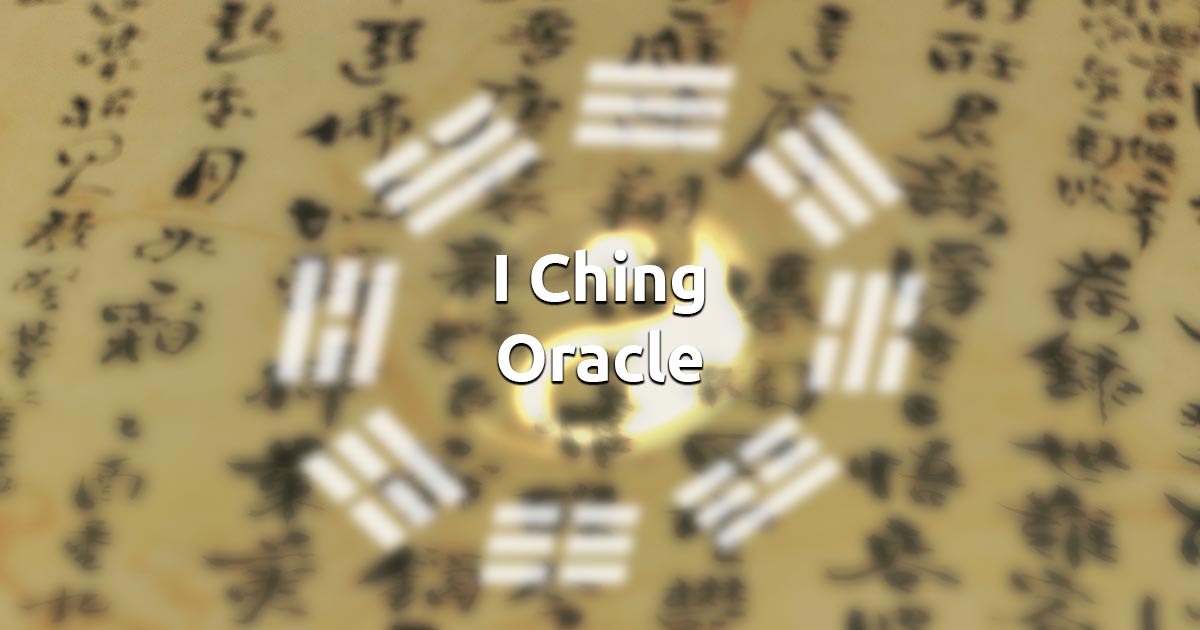

For example, two heads and one tail would total 8, two tails and a head would total 7, three tails would total 6, etc. Once you have formulated your question you should select three coins which have an identifiable ‘head’ and ‘tail’ or two easily distinguishable sides that you can assign the following numerical values to:īy throwing the three coins their combined total value will fall between 6 and 9. By throwing the coins six times you then create the six lines that become the whole hexagram. If you use the coin method, every time you throw your three coins the outcome can be translated into an energetic line. These lines are called ‘moving’ or ‘changing’ lines and a can be Yin moving/changing (old Yin) or Yang moving/changing (old Yang). There is also another energetic quality which reflects the fact that the Yin or Yang energy of any situation is dynamic and thus may be at the point of transformation, either from Yin to Yang or vice versa.
DEOXY I CHING SERIES
Each hexagram is built up from a series of six lines, either broken or unbroken, which are considered to be a reflection of the energetic qualities of the situation at hand.Ī straight line ‘_’ represents Yang energy or young Yang, and a broken line ‘_ _’ represents Yin energy or young Yin. In throwing the coins the intention is to create a hexagram. Some silent focus on your question will ensure that you have a clear connection when you are throwing your coins. There are several other ways to consult the I Ching – one traditional method uses grains of rice, another uses yarrow sticks (allegedly because Yarrow grows on the grave of Confucius), but the main method used in the West is throwing coins, usually Chinese, although any coins will do the job.Īfter gathering your 3 coins, meditate on the question you are seeking guidance on. The first step in consulting the I Ching is to formulate a question and create a hexagram, typically though the process of throwing coins. It does not actually predict the future, it simply suggests that due to the cycles of nature, what has been will be again. It is in this way, that it is said the I Ching can predict the future.
DEOXY I CHING HOW TO
In depth study of the I Ching’s commentaries gives the student clues to be able to recognize any situation and guidelines on how to act in it. Since Nature, waxes and wanes, is in constant motion and is cyclical, whatever situation you find yourself in, has been and will come again. The 64 hexagrams represent archetypal behaviours to aspire to on a practical level. The purpose of consulting the Oracle, as the I Ching is often called, is to gain mastery over one’s circumstances and thereby live a successful, spiritual life which may or may not include wealth and high position. All that’s necessary is the sincerity and aptitude to explore the concept of aligning with natural and Universal laws and the energetic polarities of Yin and Yang. Luckily there’s no need to study or even understand Taoist philosophy to appreciate or benefit from the teachings of the I Ching. The text and subsequent visualisations that flow from its words have the power to stimulate a deep-seated personal authentic vibration. In this regard the I Ching can also be helpful as a meditation support, providing comfort and guidance. Its wisdom has the potential to stimulate your sensitivity, creativity and resourcefulness, even whilst experiencing the most challenging and demanding emotional periods of your life. The book acts not only as a spiritual compass but also offers a wealth of beautiful poetry and Chinese philosophy that stretches back 5000 years into the origins of ancient Chinese customs and values. It can help with personal development or provide encouragement in finding authentic understanding and solutions to the questions or decisions that are of importance to you at any given time or situation. It is essentially a means of obtaining spiritual guidance, inspirational insight and Universal wisdom. Traditionally it is used as a tool for divination – the art of foretelling future events. The I Ching is one of the oldest of the Chinese Classical Texts.


 0 kommentar(er)
0 kommentar(er)
